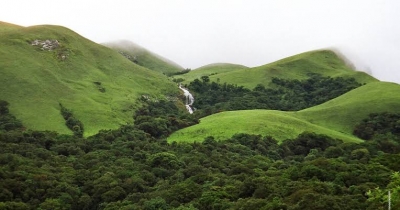
Montane in Latin means mountain. The northern Western Ghats rainforests, both montane and deciduous, cover the northern parts of the Western Ghats and spread across Gujarat, Maharashtra, Goa, and Karnataka.
Both forest types have mostly tropical moist broadleaf trees. The bio-diversities of both the woods are astoundingly remarkable, and a substantial percentage of the country’s flora and fauna are endemic to these regions.
The montane rainforests cover 30,900 sq. km at an elevation of 1000 metres, and the forest trees are primarily evergreen and multi-storeyed.
Trees as tall as 45 m and various climbers, lianas, and epiphytic plants form the canopy’s upper layer network. The lower shelters consist of bamboos, palms, and canes. The thickness of foliage decreases as heights increase and gives way to hilly grasslands with patches of stunted forest growth, called Shola forests.
Many of the forest’s endemic fruit-eating birds like the Nilgiri wood-pigeon, Malabar grey hornbill, grey-headed bulbul, and the Malabar parakeet help maintain the forest architecture. The 138 species of frogs seen here are found nowhere else on the planet, and include the pig nose, an endangered living fossil that dates back to the Jurassic period!
The moist deciduous forests cover the eastern and western mountain slopes and surround the montane rainforests from a lower altitude. This ecosystem covers 48,200 sq. km, from the southern borders of Gujarat’s Gir forests and ending with the south Karnataka forests.
The deciduous forests are tropical and humid. The western slopes receive higher rainfall because of the blocking of the south-west monsoon winds, and the eastern slopes receive lesser rain because of the rain shadow caused by the same. The forest is characterized by several plant varieties, including teak and the Indian thorny bamboo. Many of its endemic plants have medicinal properties. Fauna species include the endangered lion-tailed Macaque, tiger, common leopard, Asian elephant, Indian bison, and sloth bear. Endemism is more pronounced in its bird species, including the spot-billed pelican, the lesser frolican, and three varieties of hornbills.
Picture Credit : Google




